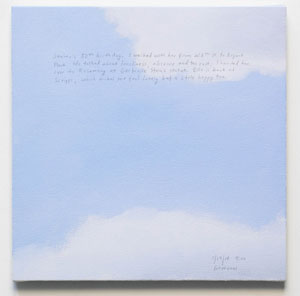10.14.24 — Points of Departure
Korean art has a place of honor in any museum’s Asian wing, but it may still struggle to free itself from the intoxicating presence of China and Japan. What can match their legacy in ceramics and ink—or in portraiture and landscape?
What can match their art’s restless hands and sensation of contemplation and rest? Would it help to include recent art, as a point of departure into the past? The Met does just that in its Korean gallery, as “Lineages,” through October 20. The result, though, says more about the present than its ancestry. It also confirms a disturbing trend in museums today.  I also work this together with a recent report on Korean art at the Guggenheim as a longer review and my latest upload.
I also work this together with a recent report on Korean art at the Guggenheim as a longer review and my latest upload.
More, and more, museums of art history consider themselves homes to modern and contemporary art as well—and it can cost them, as the Met learned in leasing the Met Breuer. One can see the appeal. Collectors must like a confirmation of their tastes, and that can translate into donations and gifts. The public may like a change from that boring old stuff others call art, and that, a museum hopes, can translate into attendance. Still, it takes money, too, and it can positively detract from older art. The Met’s modest Korean gallery has room for just thirty-two works, and now half are contemporary.
Who knew that Korean and Korean American art so much as had a deep past? Such luminaries as Lee Ufan and Byron Kim have a more obvious debt to Minimalism. (Hmm, maybe artists do not have to be “original” after all in order to stand out, now or long ago. They need only be aware of their world.) The Guggenheim situates Korea of the 1970s in a drive toward youth and experiment. At the Met, Nam June Paik proclaims that Life Has No Rewind Button, and a pioneer of video art should know.
Yet they do have a past, more than you ever knew. Ufan’s abstraction appears right after Bamboo in the Wind by Yi Jeong from more than seven hundred years ago and Blood Bamboo by Yang Gi-hun in 1906. Their vertically descending stains become his descending blues. It is From Line at that, surely a call-out to those who have worked in ink. And then come ink and gouache on paper strips by Kwon Young-woo in 1984 and a wild web of ink lines by Suh Se Ok in 1988.
Kim, in turn, has two monochrome panels in deep green, as abstract as one can get. Yet its glazes echo the materials that convert white porcelain into the paler green of celadon. Older Korean art perfected both. Their polish contrasts with the endless invention of Japanese ceramics, on view out in a corridor overlooking the Met’s great hall. I have my doubts about Kim, but other contemporaries have been eyeing the serenity and symmetry of older “moon jars” for sure. Seung-taek Lee makes his own in 1979, with the illusion of a bit of rope on top to tie it up, while Kim Whanki paints one as far back as 1954, in yellow on a red pedestal against soft green.
Of course, a jar may be the subject of still-life or a thing in itself, and the Met dedicates the gallery’s four walls to line, persons, places, and things. (Well, that should cover it.) It sounds innocuous enough, although line can become landscape, and landscape can take one to freely imagined places. Park Soo-keun in 1962 lingers over women beneath a tree, in textured oil, at once people and places. The most prominent person, a woman scientist from Lee Yootae in 1944, owes more to mid-century realism and a growing appreciation for professional women than to tradition. And sure, jars become things, at the center of the room, with two by Lee Bul in 2000 as the foot and pelvis of a cyborg.
One can still value a golden age that lasted nearly a millennium, until Europe sailed right in. Indeed, one had better. Where Chinese art once admired those who gave up power to stand outside of place and time, Kim Hong-joo in 1993 creates a layered, divided landscape, which the Met sees as commentary on a divided Korean peninsula. I prefer to think that Hong-joo got it right, but the Met still gets it wrong. Does my resistance to the contemporary make more sense in Asian art, which so often provided a greater tranquility? I just hate to see the past crowded out and forgotten.
Read more, now in a feature-length article on this site.